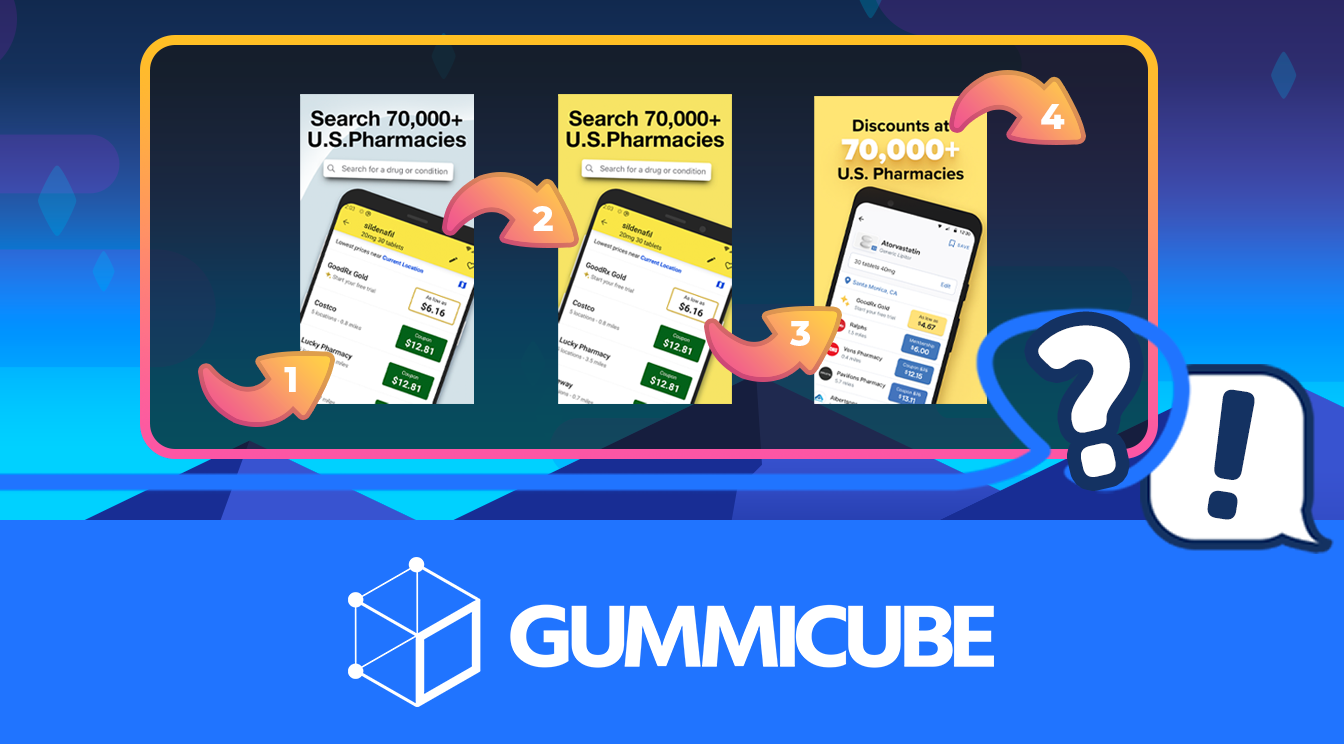Maintaining Momentum After Being Featured
February 14th, 2019


by David Quinn
VP of Strategy & Partnerships at Gummicube, Inc.
Getting featured on the App Store or Google Play Store can be a great benefit for an app. Not only is it a validation of the app’s success and enjoyability, but it also increases its visibility significantly. Users will be able to see the app right from the front page and it comes with the store’s recommendation. After being featured, however, many apps see sharp drop offs in their installation numbers – so how can App Store Optimization help an app maintain momentum after it’s been featured?
Optimize Metadata Before Featuring
When your app is featured, you’ll have a great opportunity to improve its ranking for important terms. The increased traffic being featured provides will help improve its rankings for the keywords the app is currently targeting, so core terms should be the main focus beforehand.
For instance, if a dating game is featured, it should already be targeting important keywords like “romance” or “date.” The improvement from being featured will help it increase its rankings and show up in later searches for “romance app” or “date game.”
Ranking well for optimized keywords helps an app show up in search results, which is where 70% of app discovery occurs. When an app is no longer featured on the front page, it should be easily discoverable within searches in order to maintain its high download numbers. The best way to do that is to prepare not only while the app is featured, but before – optimizing metadata will keep its discoverability high before, during and after it’s featured.
Maintain Marketing
The key to maintaining momentum is to keep discoverability high even when the app is no longer on the front page of the store. While optimized metadata is essential for that, paid marketing campaigns such as Search Ads will also help.
As mentioned earlier, apps can maintain their post-featured rankings by remaining visible in searches, which is an area where Search Ads can help. Using Search Ads campaigns, especially for the optimized keywords the app targeted during its time featured, can help ensure users will see the app during searches.
Think in terms of a game. Being featured is a one-time power-up – it provides an enhancement at first, but after it wears off, the stats go back to normal and other players begin to catch up. However, using Search Ads works as another power-up, one that might not have the same initial boost as being featured but provides more ongoing benefits. Just like a game, you don’t want to expend all your resources at once – running Search Ads campaigns consistently can help stretch out that boost while giving your keywords a power-up over time.
Read Your Reviews
Many new users will flock to an app when it’s featured, many of whom will want to share their thoughts on it. These reviews are valuable insights that can help improve your app.
Pay close attention to what users are saying. You’ll be seeing plenty of feedback from new users during the app’s boost from being featured, so if anyone encounters a bug or issue, they’ll let you know. If part of the app isn’t working as well as hoped, you can use this feedback to identify and address the issue. On the other hand, if there’s something users are consistently liking, this is great feedback as well and can help you focus your marketing.
Responding to user reviews is also important. Replying to comments will let all users browsing the reviews see that you’re listening to what they have to say and improving your app accordingly. If a user uninstalled the app due to an issue they found, they might be encouraged to install it again when you address the issue and let them know. This can regain downloads lost after the initial surge from being featured, or flip previously negative reviews positive.
Reiterate and Reoptimize
Whether or not an app has been featured, one of the most important things it can do to maintain its rankings and downloads is to continue improving. This means constantly analyzing keyword rankings and find areas to improve, testing new creative sets to find ones that convert better and updating the app to draw in and keep more users.
App Store Optimization is an iterative process. Each new version builds on the success of the last, improving more and more with every change. It requires following consumer trends and seeing what keywords are hot or cold, testing new variants to see what gets the most conversions and consistently finding ways to improve.
Developers must play a long game to maintain installations in the app stores and being featured is just one part of that. Making sure your app has optimized organic search discovery before a feature can help its rankings during the feature. If positive click-through rate continues, this can be maintained long after the featuring ends. Being featured can provide a great one-time boost, but it’s what comes after that determines long-term success.
Want more information regarding App Store Optimization? Contact Gummicube and we’ll help get your strategy started.
Similar Articles

Posted on October 6th, 2023
Ghostly happenings are among us... and in your app listing too? If you aren't leveraging the power of app seasonality to make relevant tweaks to your store listing you're leaving precious engagement and conversions on the table.

Posted on November 8th, 2021
Developers on the iOS App Store should plan in advance of the upcoming Holiday Schedule to allow enough time for apps to get approved during the busy holidays.

Posted on November 1st, 2021
App Store Optimization is an involved process that should be regularly revisited based on recent changes in trends. Iteration is one of the key drivers for success in ASO.





